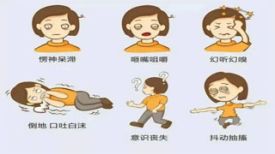
In today's fast-paced, technology driven lifestyle, many people experience neck muscle tension due to various factors, which affects daily activities and emotions.
1、 Reasons for neck muscle tightness
Neck muscle tension is caused by various factors, and understanding the causes is crucial for solving the problem. Common reasons include:
1. Poor posture: Poor sitting or standing posture when using electronic devices can easily cause muscle strains and neck tension.
2. Excessive screen time: Staring at the screen for a long time can cause tension in the neck muscles due to lowering the head.
3. Head forward tilt: Habitual head forward tilt can increase neck muscle pressure, leading to long-term tightness.
4. Improper sleeping posture: Poor sleeping posture at night or unsupported pillows can cause the neck muscles to tighten.
5. Stress and tension: Emotional stress often causes muscle tension, especially in the neck and shoulder muscles.
2、 Targeted stretching of each neck muscle
1. Single chip microcontroller
-Massage: Find a comfortable sitting or standing position, place one finger tip on one side of the neck, directly below the ear, feel the thick muscle band, gently apply pressure and slide along the muscle to the collarbone, gently pinch and massage, then switch sides.
-Stretching: Sit straight or stand straight, tilt your head to one side, place your ears close to your shoulders, then turn towards the ceiling and tilt back to feel the stretch. Hold for 30 seconds and then switch sides.
2. levator scapula muscle
-Massage: Sitting comfortably, place the massage ball behind the shoulder and below the upper edge of the scapula, press against the wall, move up and down to let the ball slide along the muscles, focus on the tense area and take deep breaths.
-Stretching: Sit straight or stand straight, place your right arm to the side and grab the back of your head. Lower your head to bring your nose closer to your armpit and hold for 30 seconds before switching sides.
3. Diagonal muscle
-Massage: Stand or sit comfortably, place the massage ball on the side of the neck and above the collarbone, apply pressure and slowly roll, move the head, and take deep breaths to relax.
-Stretching: Sit straight or stand straight, place one hand on the collarbone to secure the shoulder, look up at the ceiling and turn your head, hold for 30 seconds, then switch sides.
4. Upper trapezius muscle
-Massage: Stand with one side against the wall, place the massage ball between the top of your shoulder and the wall, press and roll your body against the ball, find the tight spot, take deep breaths and relax.
-Stretching: Sit straight or stand straight, tilt your head to the left and lean your ears against your shoulders, keep your shoulders down, hold for 30 seconds, then switch sides.
5. Underoccipital muscles
-Massage: Lie flat, place the peanut massage ball under the skull base, retract the chin and move the head left and right for the ball to massage.
-Stretching: Sit or stand in the correct posture, retract your chin, place your hands behind your head and pull down slightly forward, hold the stretch for 30 seconds, release and repeat 2-3 times.
3、 Tips for maintaining neck health
1. Develop good posture: Ensure that the computer screen is level with your eyes, avoid hunching over, relax your shoulders and pull them back, keep your head directly above your shoulders, and maintain a neutral neck.
2. Control screen time: Avoid "texting neck", keep the device at eye level, and reduce neck muscle pressure.
3. Regular rest: Get up and walk regularly, stretch and change posture at least every hour to relax and restore neck muscles.
4. Neck exercises: Incorporate simple neck exercises and stretches into daily life, such as gentle rotations, left and right movements, and back and forth stretches, to maintain muscle health.
5. Stay active: Engage in activities such as walking, swimming, or yoga to improve blood flow, prevent stiffness, and support neck health.
6. Adjust sleeping position: Use a support pillow that maintains the natural curve of the neck, avoid sleeping on your stomach, and try pillows of different heights and materials.
7. Managing stress: Practice techniques such as deep breathing, meditation, or progressive muscle relaxation, and incorporate hobbies or activities to relieve stress and relax.
By understanding these key techniques, incorporating stretching and massage into daily life, addressing potential issues such as poor posture, can alleviate neck tension, restore comfort, enhance neck mobility, and reduce pain.


